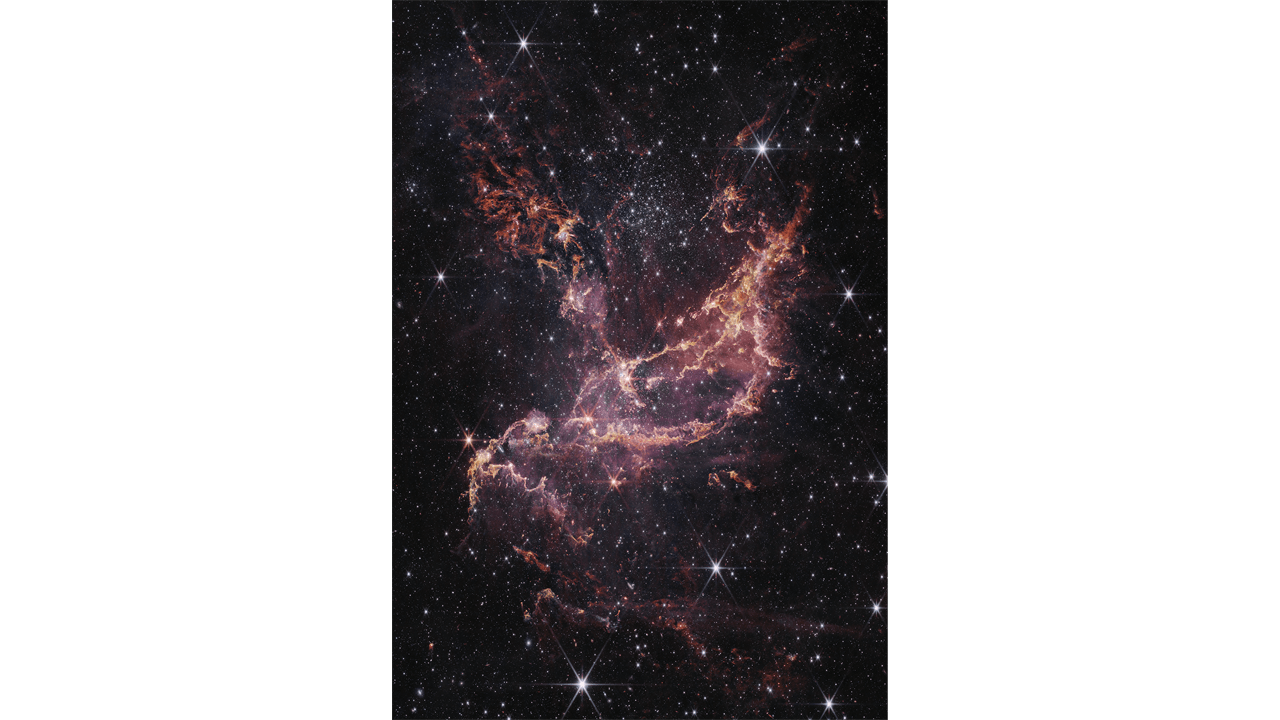
Deep within a little galaxy some 200,000 light-years from Earth, there lies mysterious, primordial pockets of frenetic activity. But thanks to the James Webb Space Telescope (JWST), one cluster of stars within the dwarf galaxy is a little less mysterious — as is, in turn, the process of star formation in the universe.
The new images and research were presented Wednesday as part of the 241st annual meeting of the American Astronomical Society.
What’s new — Scientists released a jaw-dropping new image from JWST on Wednesday that shows this raging activity in all its glory: Violet, pink, and orange filaments streak across the darkness of space to reveal the star-forming region NGC 346.

The pink and orange filaments represent two kinds of hydrogen gas — one known as energized hydrogen, which is extremely hot, and the other known as molecular hydrogen, which is extremely cold. For context, the energized hydrogen is about twice as hot as the Sun’s core, while the molecular hydrogen is nearly as cold as the surface of the icy dwarf planet Pluto. The clouds emanating from the filaments are dust. Together, the cold gas, dust, and other elements within the cluster create a great environment for stars to slowly accrete material and form.
“We’re seeing the building blocks, not only of stars, but also potentially of planets,” explains European Space Agency researcher Guido De Marchi in a statement posted to the ESA’s JWST blog. Baby stars, known as “protostars,” have been viewed in NGC 346 before JWST, but never in as great detail and specificity. In turn, JWST’s observations may lead to more discoveries within the region, the researchers hint.
Why it matters — In NGC 346, which is located in a dwarf galaxy known as the Small Magellanic Cloud, the conditions resemble a period of the cosmos’ history known as the “cosmic noon.” Just as “high noon” in the Wild West was the term given for the moment of most violent activity, out in the universe, “cosmic noon” is a period marked by continuous and unrelenting star formation.
“A galaxy during cosmic noon wouldn’t have one NGC 346 like the Small Magellanic Cloud does,” explains astronomer Margaret Meixner in a statement released by the Webb Space Telescope team. “It would have thousands” of star-forming regions like this one.”
Meixner is based at the Universities Space Research Association and is a principal investigator of the research team behind the new image.
“But even if NGC 346 is now the one and only massive cluster furiously forming stars in its galaxy, it offers us a great opportunity to probe conditions that were in place at cosmic noon,” she adds in the same statement.

What’s next — The research team’s work isn’t quite done: The telescope also collected spectroscopic data from NGC 346 that may reveal more about what material, exactly, is feeding the myriad baby stars within the cluster.
In turn, this information can tell us more about star formation in the universe and, closer to home, whether star formation in the Milky Way might differ from that found elsewhere in the cosmos. The star formation seen in NGC 346 resembles that observed in billions-of-years-old galaxies from the early days of the universe — so it is quite the model for sussing out more about our mysterious cosmos.
“Since the Small Magellanic Cloud has a similar environment to galaxies during cosmic noon, it’s possible that rocky planets could have formed earlier in the universe than we might have thought,” De Marchi explains in the same statement.







